The collection of Augsburg silverworks in the Royal Castle Museum in Krakov
We would like to thank the Wawel Museumdirector Prof. Dr.Andrzej Betlej and especially Mr Darius Nowacki, curator for applied arts at the Wawel Castle Museum in Krakow, who in the following essay deals with some of the outstanding objects of the Augsburg silversmiths in the Wawel Castle collection.
A visit to this wonderful museum on the Wawel in Krakow will hopefully soon be possible again with an improved corona situation.
Helga Matzke Team, Febr. 2021
The collection of Augsburg silverworks in the Wawel Royal Castle is the biggest in Poland and contains about 80 pieces from the end of the 16th century to the early 19th century. The quality of it is comparable with the historical treasures preserved in the Pauline Convent at Jasna Góra (Częstochowa), Sanctuary of Black Madonna. The most important part of the Wawel collection – including the ones described below – is being presented in the Royal Treasury.
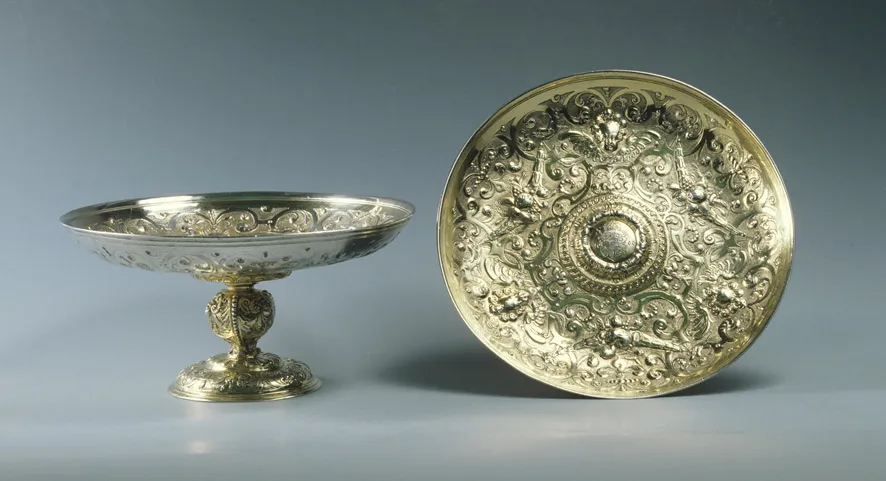
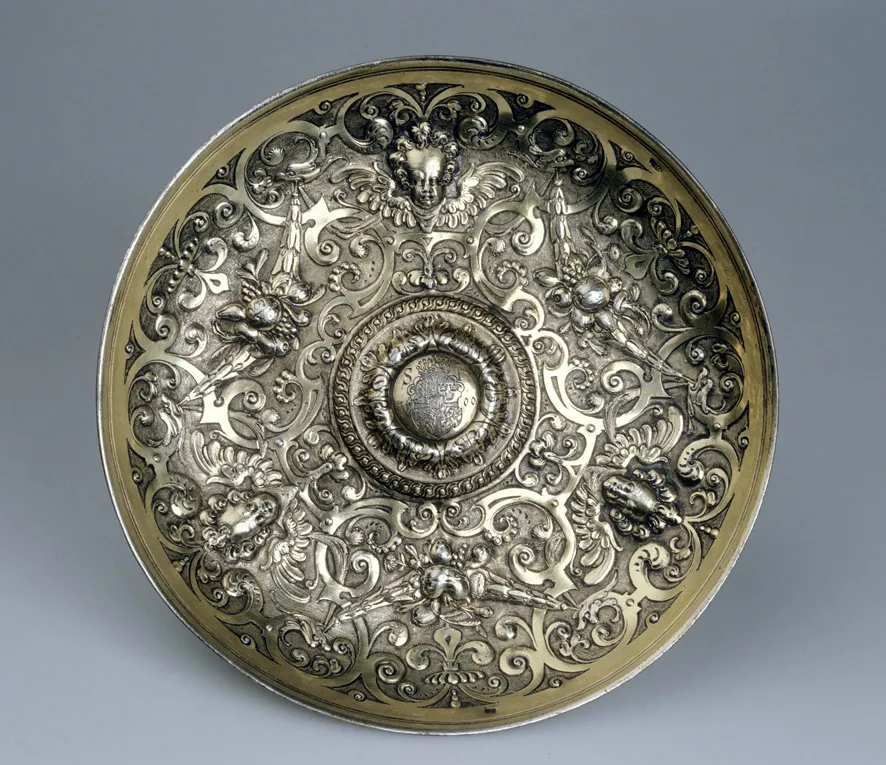
Pair of the tazzas with the arms of Sigismund III Vasa (1566-1632), 1587 King of Poland
Hermann Plexen (active from ca. 1578 – after 1610), Augsburg, 1600
Inv. 6043, 8913
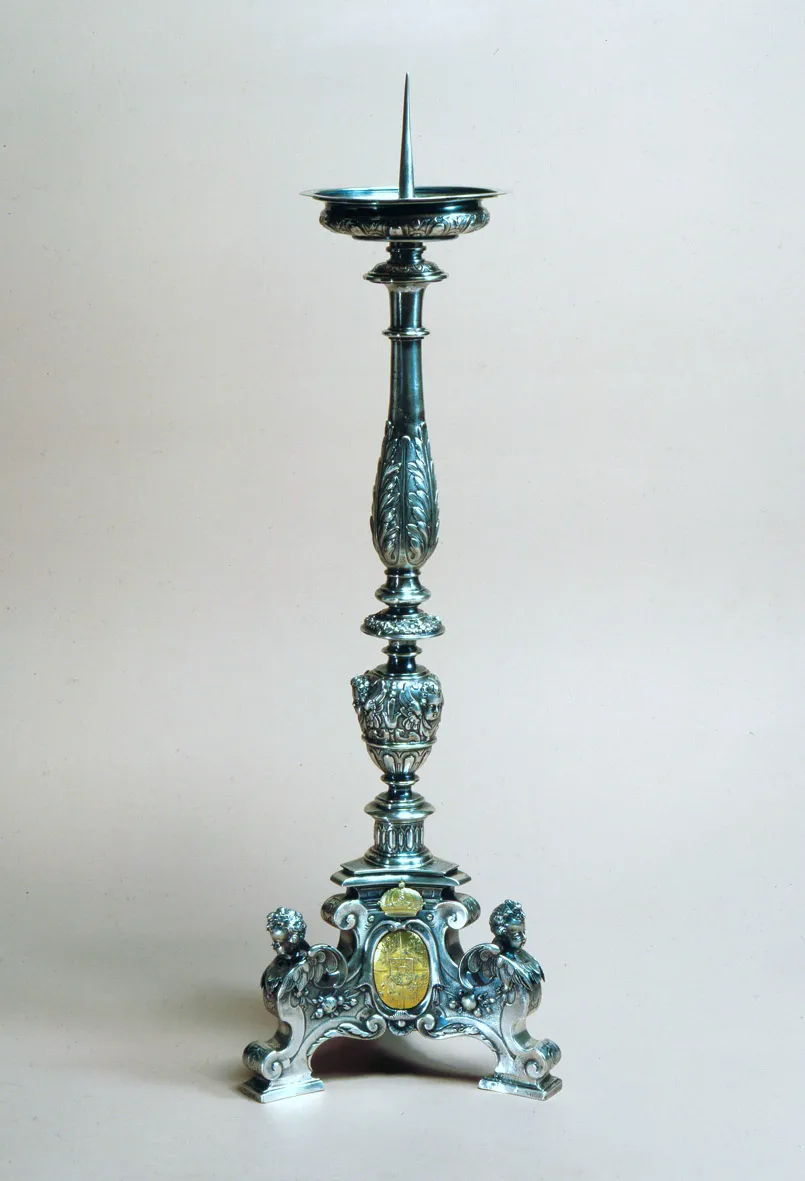
Altar candlestick from the set of six commissioned by the Queen of Poland Constance of Austria (1588–1631), 2nd wife of Sigismund III Vasa
Johannes I Lencker (active ca. 1602–1637), Augsburg, 1624-1625
Inv. 8434
The set was preserved in the St. James Church in Neisse near Breslau (Silesia) until 1945. Four other items are now in Warsaw Royal Castle, Diocesan Museum in Opole, one is lacking.
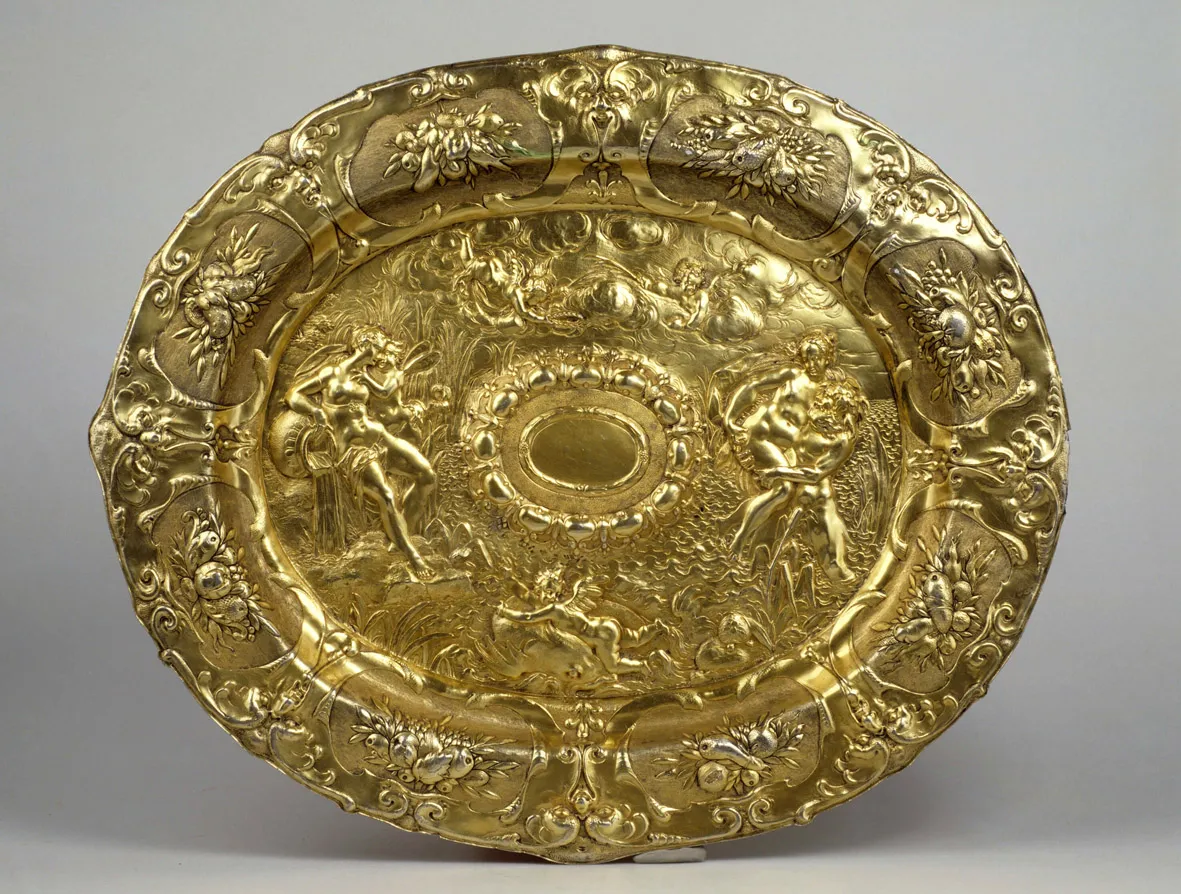
Basin
Elias I Drentwett (active ca. 1617–1643), Augsburg, probably 1617
Inv. 1374
Used to belong to János XVI Ferenc Count Pálffy (1829–1908), the famous Hungarian collector who resided in Pezinok and Pressburg (Bratislava). In 1938 bought to the Wawel collection.
The basin decorated with representations of water deities: a nymph (or Venus) with Amor, a triton and nereid as well as putti and a putto on a dolphin.
The Wawel piece, especially in respect of the harmony of composition closest analogy to a basin from the lavabo set with arms of Carl von Habsburg (1590–1624), bishop of Brixen and Breslau, Grand Master of the Teutonic Order (Bayerisches Nationalmuseum).
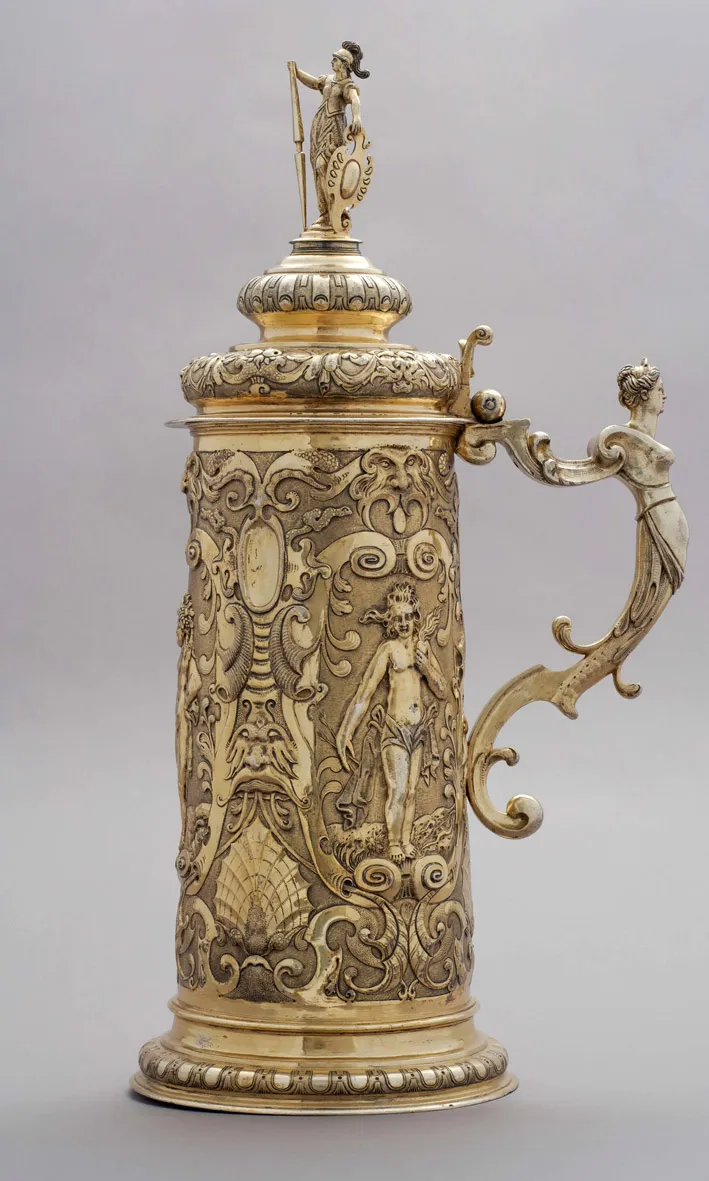
Jug
Hans Jacob I Baur (active ca. 1622–1653), Augsburg, ca. 1630
Inv. 5728
Used to belong to János XVI Ferenc Count Pálffy (1829–1908), the famous Hungarian collector who resided in Pezinok and Pressburg (Bratislava). In 1972 bought the Wawel collection.
The sumptuous wine ewer of a slender body remains a tankard of colossal size. The body of it is decorated with three medallions containing figures of Bacchus, Venus and Ceres bringing to mind a sentence by Publius Terentius Afer: Sine Baccho et Cerere friget Venus.
An almost identical object from the same workshop is preserved in the Kremlin Museum.
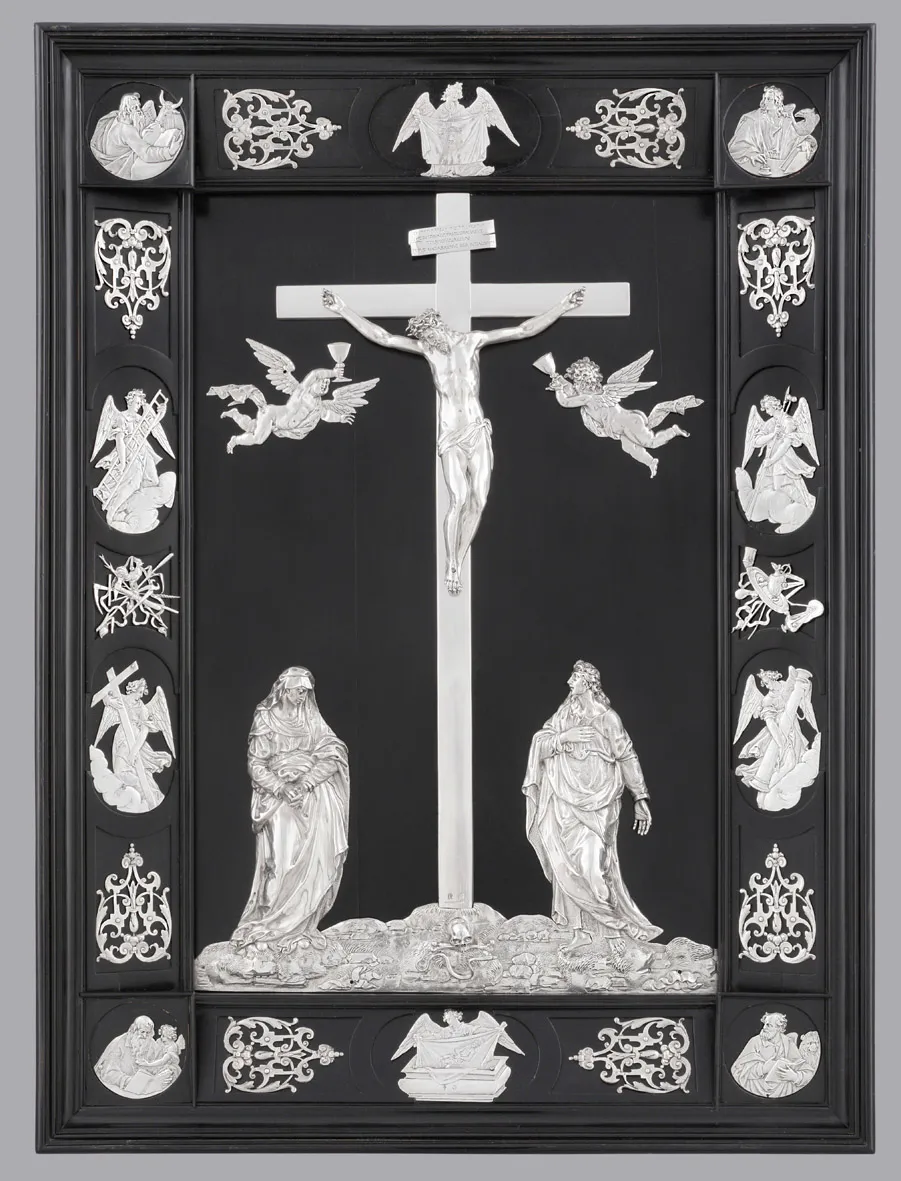
House altar
Gregor Zorer (active before 1619–1634), Augsburg, ca. 1630
Inv. 1264
There are in Poland very similar piece from the same workshop. It is a crucifix commissioned by the Queen of Poland Marie Louise Gonzaga (1611-1667), 2nd wife of Ladislas IV Vasa to the Convent of the Order of the Visitation of Holy Mary in Warsaw about 1630.
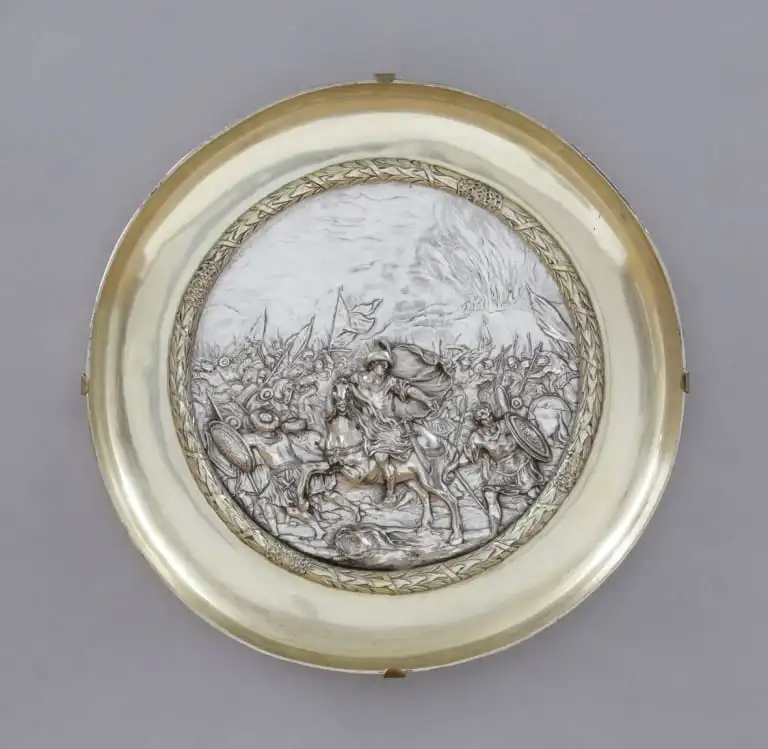
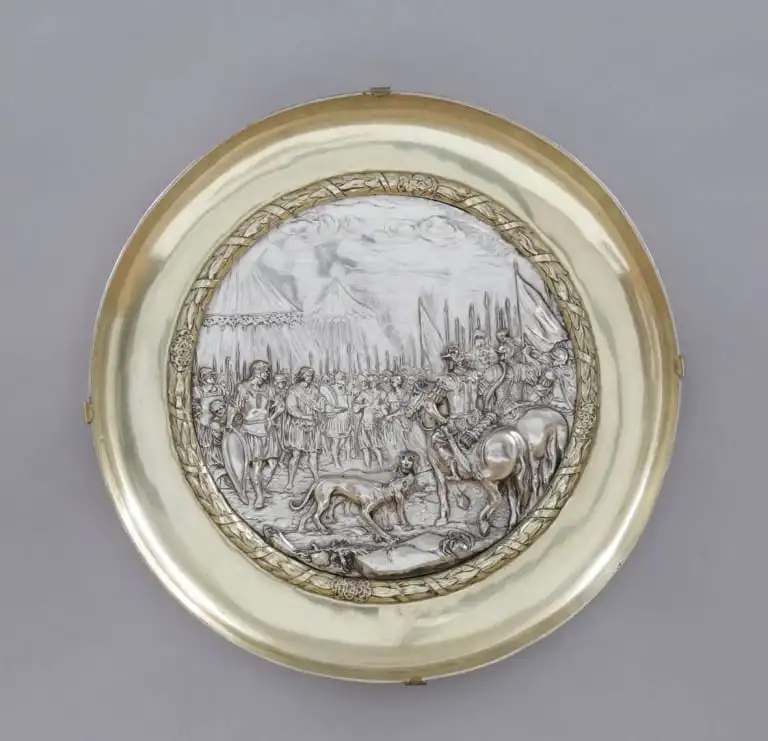
Two bowls of tazzas with scenes from the story of King Darius (?)
Johann I Jäger (active ca. 1657–1669), Augsburg, 1665–1669
Inv. 7893, 7894
Until 1939 in the family residence of the Princes Sapieha in Krasiczyn).
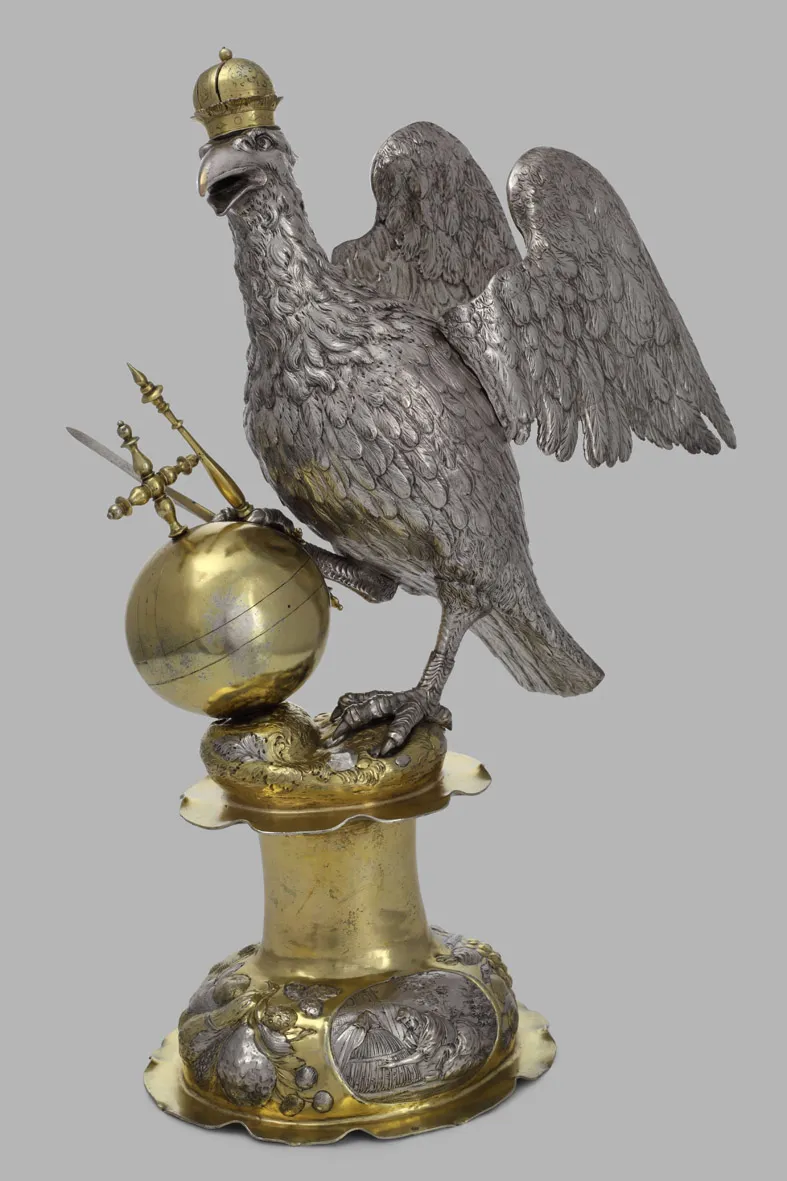
Vessel in the form of the Polish Eagle from the service of John Casimir Vasa (1609–1672), King of Poland 1648–1668
Heinrich Mannlich (active 1658–1698), Augsburg, ca. 1666
Inv. 6033
The Polish Eagle, presenting a sceptre and a globe, is a part of the multi-pieces service made about 1666. It was convincingly proved that the service belonged to the John Casimir Vasa. Only three parts of the service survived to this day including the centrepiece in the shape of a monumental Eagle – the figure itself was wrought by Abraham I Drentwett (d. 1666), while the base was made by Heinrich Mannlich, who seems to have carried out the commission for his deceased colleague. Mannlich prepared also the third piece which survived – the Gotland Lion with a sceptre. Both are now in the Kremlin Museum as the Eagle was presented to Czar Aleksei Mikhailovich by the Polish envoys sent to Moscow by the King of Poland Michael Korybut Wiśniowiecki at the turn of 1671 and 1672. Two smaller objects are characterized by their identical function as vessels with an inlet in the top of the head, the crown used as a stopper, and an outlet through the open beak or mouth, besides similar dimensions and identical bases with a pair of oval medallions containing allegorical scenes referring to happy rule.
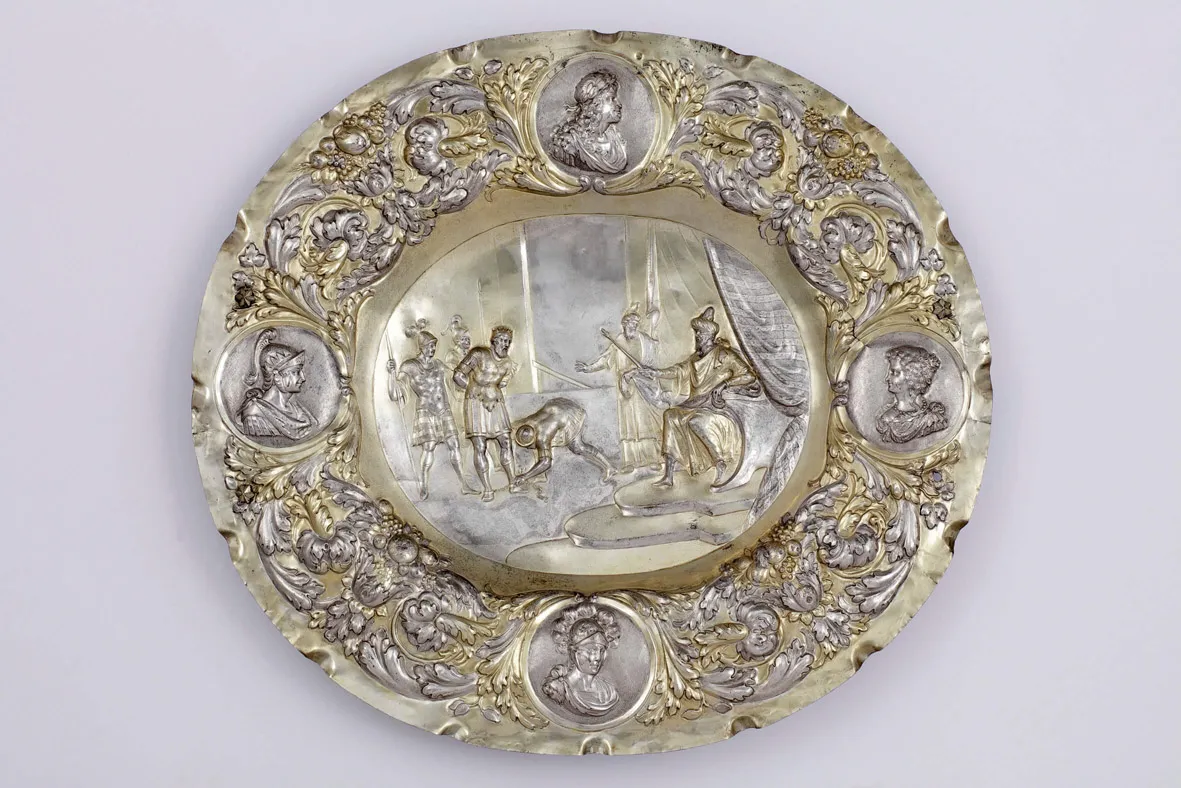
Plate with the scene of the liberation of Croesus from fetters by King Cyrus
Georg Christoph Wieland (active ca. 1684–1715), Augsburg, ca. 1690-1700
Inv. 8856
The centre scene from ancient history is surrounded on the rim by repoused acanthus leaves with portraits of the rulers, most probably: emperor Leopold I (1640–1705), Charles V, Duke of Lorraine (1643–1690) and his wife Eleanor of Austria (1653–1697), in the years 1670–1678 Queen of Poland and Leopold, Duke of Lorraine (1679–1729).
Several similar plates were created in the same workshop, e.g. with a scene of the triumph of Neptune and Amphitrite (Hermitage Museum), with a scene from the history of Damocles (Hamburg, Museum für Kunst und Gewerbe) and with the Beheading of St. Catherine (Brodick Castle).
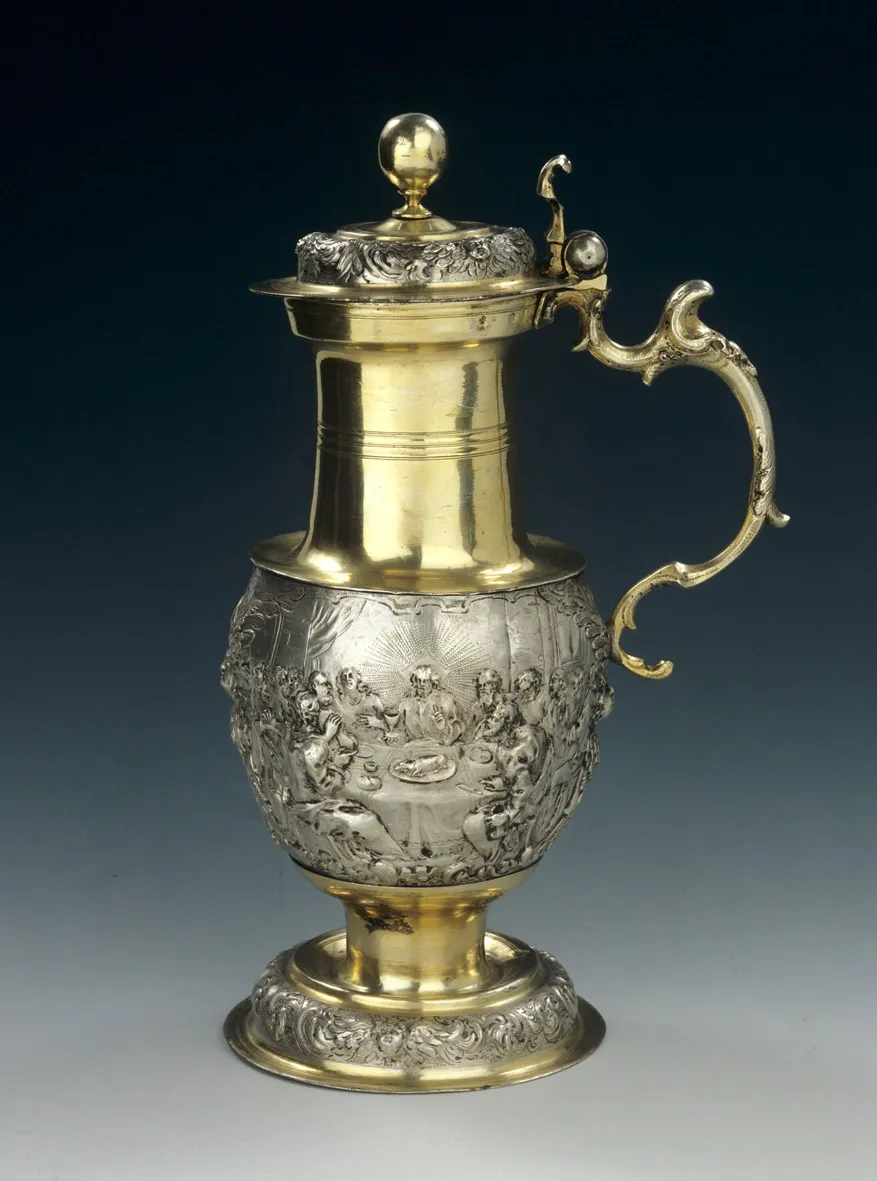
Ewer of the Lord’s Supper with the representation of Last Supper and Crucifixion
Israel Thelot (active ca. 1654–1696), Augsburg, 1679
Inv. 5880
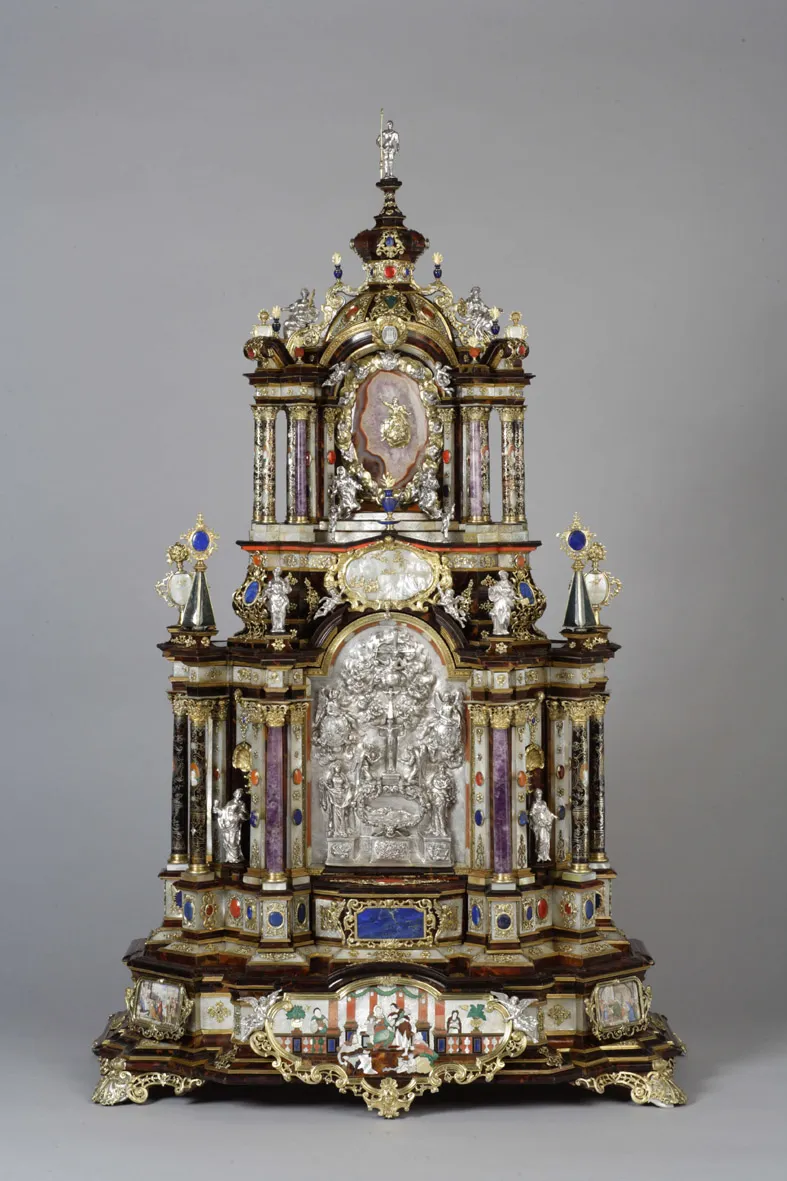
Household altar
most probably: Johannes Mann (1679-1754), Johann Valentin Gevers (ca. 1662–1732) and others
central plaque: Johann Andreas Thelot (1655–1734, active before 1689)
Augsburg, ca. 1725
Oakwood, cypress wood, rosewood, silver, gold, brass, copper, tortoiseshell, ivory, mother-of-pearl, coral, lapis lazuli, agate, carnelian, onyx, jasper, parchment, gouache
Inv. 5288
Until 1966 in the family residences of the Princes Potocki in Tulczyn and Peczara (Ukraine today), then in Cracow.
The unsigned household altar of a well-balanced architectural composition is close to the Augsburg clocks and household altars dating from the turn of the 17th century and earlier works from Thelot’s workshop, such as a pair of clocks commissioned about 1700 for the Munich Residence. Direct affinities link it with the altar at the Hermitage Museum, dating from 1719 and first and foremost to the table of ancestors (Ehrentafel) of the House of Wittelsbach (about 1726–1729, Bayerisches Nationalmuseum). The latter seems to be the modified upper section of the Wawel altar but inferior to it in respect of compositional merits; worth noting is also the use of identical, diverse materials. The above-adduced analogies permit the more precise dating of the Wawel object between about 1720 and 1725 and defining it as one of the more successful products of Thelot’s workshop.


